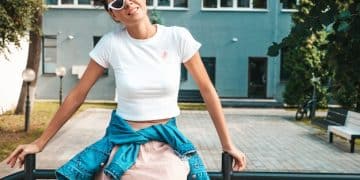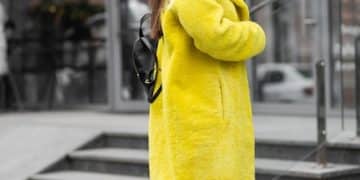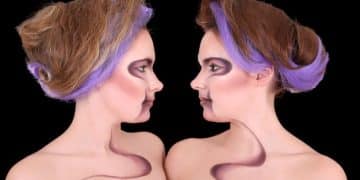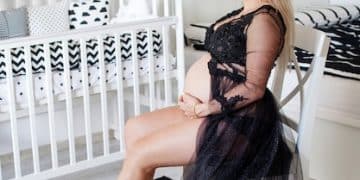Mix Prints Like a Pro: Your Step-by-Step Style Guide
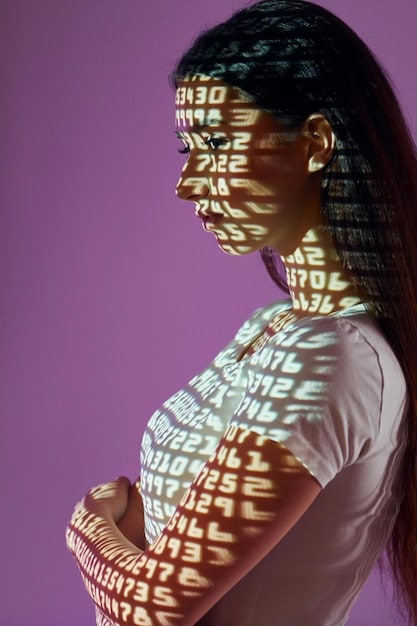
Mixing prints can seem daunting, but with the right guidance, anyone can master this fashion-forward skill. This step-by-step guide provides easy tips and tricks to confidently mix and match prints, creating stylish and unique outfits.
Are you intrigued by the bold and exciting world of print mixing but hesitant to try it yourself? Don’t worry! This comprehensive guide, “How to Mix and Match Prints Like a Pro: A Step-by-Step Guide,” will equip you with the knowledge and confidence to create stunning, head-turning outfits.
Understanding the Basics of Print Mixing
Before diving into the specifics, it’s essential to understand the foundational principles of print mixing. Knowing these basics will allow you to approach print combinations with a sense of structure and purpose.
Scale and Proportion
Scale refers to the size of the prints. Mixing different scales within the same outfit creates visual interest and prevents monotony.
Color Harmony
Color is a crucial element in making sure mixed prints work together. Focus on pulling out a common color in both prints.
Here are some tips to help you get started with understanding the basics of print mixing:
- Start Simple: Begin with just two prints to get comfortable with the process.
- Use Neutrals: Incorporate neutral-colored items to balance the bold prints.
- Consider Texture: Don’t just focus on prints; texture can also add depth to your mixed-print outfit.
Mastering these basics requires experimentation and a keen eye. Understanding scale, color, and balance forms the building blocks of successful print mixing. Don’t be afraid to try different combinations until you find what works best for you.
Choosing Your Base Prints
Selecting the initial prints for your outfit is a crucial step. Here, we’ll explore essential choices and how to pick prints with confidence.
Classic Prints
Classic prints include stripes, polka dots, florals, and animal prints. These are versatile and relatively easy to mix with other patterns.
Modern Prints
Modern prints encompass geometric patterns, abstract designs, and novelty prints. They can add a contemporary edge to your outfit.
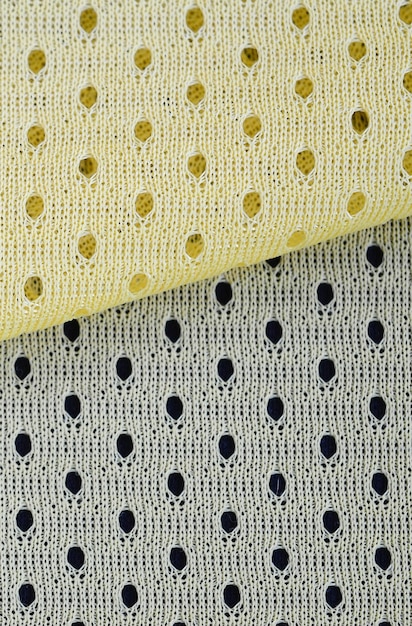
When choosing your base prints, consider these guidelines:
- Pick a Dominant Print: Select a bolder or larger-scale print that will serve as the main focus.
- Pair with a Subordinate Print: Choose a smaller or more subtle print to complement the dominant one.
- Think About the Occasion: Tailor your prints to suit the event or setting.
Selecting your base prints is about strategic balance. Combining classic and modern elements helps create a cohesive, stylish look that resonates with your personal style. Experiment with different combinations to find what makes you feel most confident.
Matching Prints by Color
Color harmony can make or break a mixed-print outfit. Understanding how to match prints by color ensures a cohesive and stylish ensemble.
Monochromatic Matching
Monochromatic matching involves using different prints within the same color family, such as various shades of blue or gray.
Complementary Colors
Complementary colors are opposite each other on the color wheel, such as blue and orange or red and green. Using these colors in prints can create a dynamic and vibrant look.
Here are a few strategies for matching prints by color:
- Find a Common Hue: Look for a shared color in both prints to create a sense of unity.
- Use Color Blocking: Break up the prints with solid color blocks to balance the overall look.
- Incorporate Neutrals: Neutrals like black, white, and gray can tie together disparate prints and colors.
Effectively matching prints by color involves careful consideration and a mindful approach to your wardrobe. Color relationships can bring harmony and balance to your outfit. Take the time to experiment and discover what color combinations make you feel fabulous.
Mixing Different Types of Prints
Experimenting with different types of prints can add depth and complexity to your outfits. Learn how to master this technique.
Combining Geometrics and Florals
Pairing geometric prints like stripes or checks with floral patterns creates an interesting contrast that works well in many settings.
Animal Prints and Abstracts
Mixing animal prints, such as leopard or zebra, with abstract designs can create a bold and artistic statement.
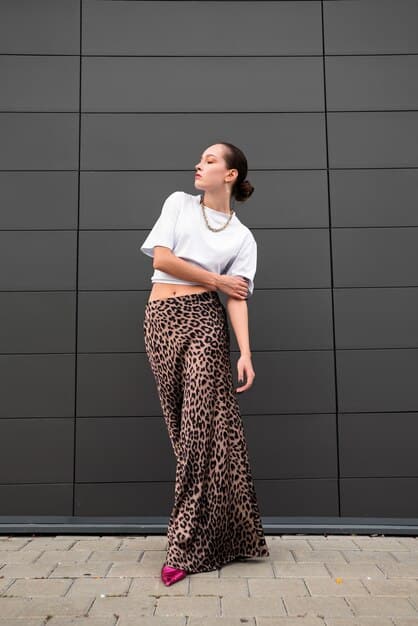
Keep these guidelines in mind when mixing different types of prints:
- Balance the Scales: If one print is large, make sure the other is smaller to avoid overwhelming the look.
- Consider the Colors: Ensure that the colors in both prints complement each other.
- Add Solid Pieces: Use solid-colored clothing items to break up the prints and add balance.
Mixing different types of prints requires a creative eye and willingness to experiment. The result can be striking. Don’t be afraid to try unique combinations and find the signature looks that express your personality.
Accessorizing Your Mixed Prints
Accessories play a crucial role in complementing and enhancing your mixed-print outfits. Learn how to choose the right accessories to complete your look.
Keep it Minimal
When your outfit already features multiple prints, less is often more with accessories. Simple jewelry and understated belts can work wonders.
Neutral Accessories
Neutral-colored accessories such as nude shoes, a black bag, or white scarf can balance the boldness of your prints.
Consider these tips for accessorizing your mixed prints:
- Choose One Focal Point: Let your outfit be the star and keep accessories subtle.
- Match Colors: Pick accessories that echo colors found in your primary and secondary prints.
- Consider the Occasion: Choose accessories appropriate for the event or outing.
Accessorizing mixed prints involves finding the right balance. The goal is to enhance, not overwhelm. When done correctly, the right accessories will pull everything together, creating a perfectly polished look.
Confidence is Key
Ultimately, the most important aspect of mixing prints is wearing your outfit with confidence. No matter what you’re wearing, your self-assurance will make all the difference.
Embrace Your Personal Style
Fashion is a form of self-expression. Choose combinations that resonate with your personality and make you feel good.
Ignore the “Rules”
While guidelines can be helpful, don’t be afraid to break conventional style rules. Experiment and see what works for you.
Here are a few final pointers for exuding confidence:
- Practice Makes Perfect: The more you experiment, the more confident you will become in your print-mixing skills.
- Get Inspired: Look to fashion blogs, magazines, and social media for inspiration.
- Trust Your Instincts: If you feel good in an outfit, chances are you look amazing too.
Confidence is the ultimate accessory. Wear your mixed prints with pride and let your personality shine. Fashion should be fun, so enjoy experimenting and expressing yourself through your unique style.
| Key Point | Brief Description |
|---|---|
| 🎨 Color Harmony | Match prints by finding a common color or using complementary colors. |
| ⚖️ Scale Balance | Mix different print sizes to create visual interest and avoid monotony. |
| ⭐ Classic Prints | Start with versatile patterns like stripes, polka dots, or florals. |
| ✨ Confidence | Wear mixed prints with self-assurance to make any outfit look amazing. |
FAQ
▼
Begin with classic prints like stripes and polka dots. These are versatile and mix well with other patterns. Focus on pieces that share a similar color palette to ensure cohesion.
▼
Pair larger prints with smaller, more subtle patterns. For instance, a bold floral print can be balanced with fine stripes. This prevents the outfit from becoming overwhelming.
▼
Yes, but it requires careful planning. Ensure the prints have a common color or theme. Use neutral accessories to break up the patterns and maintain balance in your ensemble.
▼
Accessories are crucial for completing a mixed-print look. Opt for neutral-colored shoes, bags, and jewelry to avoid overwhelming the outfit. They help tie everything together.
▼
Print mixing is a fantastic way to showcase your individuality. Choose prints that resonate with you, even if they’re unconventional. Confidence is key to rocking any unique fashion choice.
Conclusion
Mastering how to mix and match prints like a pro truly comes down to understanding a few key principles: color harmony, scale, and confidence. By starting simple, experimenting with different combinations, and trusting your instincts, you’ll be able to create unique and stylish outfits that express your personal style. So go ahead, embrace the art of print mixing and transform your wardrobe into a canvas of creativity and flair!

